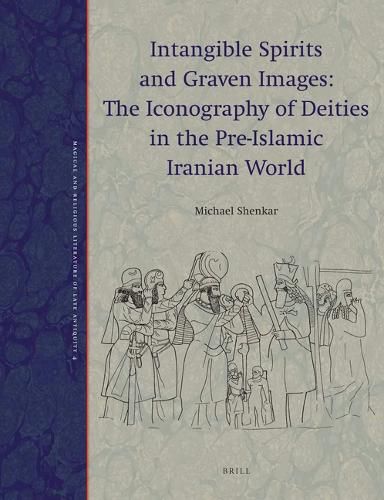Readings Newsletter
Become a Readings Member to make your shopping experience even easier.
Sign in or sign up for free!
You’re not far away from qualifying for FREE standard shipping within Australia
You’ve qualified for FREE standard shipping within Australia
The cart is loading…






Winner of the the Ghirshman Prize by the French Academie des Inscriptions et Belles-Lettres! This prize was established in 1973 by the donation made by Roman Ghirshman, one of the prominent French archaeologists of Pre-Islamic Iran. It is awarded annually for a publication in the field of Pre-Islamic Iranian Studies.
In Intangible Spirits and Graven Images, Michael Shenkar investigates the perception of ancient Iranian deities and their representation in the Iranian cults. This ground-breaking study traces the evolution of the images of these deities, analyses the origin of their iconography, and evaluates their significance. Shenkar also explores the perception of anthropomorphism and aniconism in ancient Iranian religious imagery, with reference to the material evidence and the written sources, and reassesses the value of the Avestan and Middle Persian texts that are traditionally employed to illuminate Iranian religious imagery. In doing so, this book provides important new insights into the religion and culture of ancient Iran prior to the Islamic conquest.
$9.00 standard shipping within Australia
FREE standard shipping within Australia for orders over $100.00
Express & International shipping calculated at checkout
Winner of the the Ghirshman Prize by the French Academie des Inscriptions et Belles-Lettres! This prize was established in 1973 by the donation made by Roman Ghirshman, one of the prominent French archaeologists of Pre-Islamic Iran. It is awarded annually for a publication in the field of Pre-Islamic Iranian Studies.
In Intangible Spirits and Graven Images, Michael Shenkar investigates the perception of ancient Iranian deities and their representation in the Iranian cults. This ground-breaking study traces the evolution of the images of these deities, analyses the origin of their iconography, and evaluates their significance. Shenkar also explores the perception of anthropomorphism and aniconism in ancient Iranian religious imagery, with reference to the material evidence and the written sources, and reassesses the value of the Avestan and Middle Persian texts that are traditionally employed to illuminate Iranian religious imagery. In doing so, this book provides important new insights into the religion and culture of ancient Iran prior to the Islamic conquest.